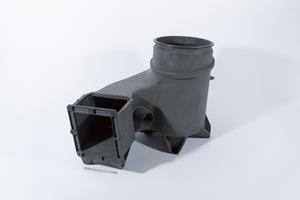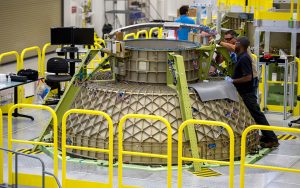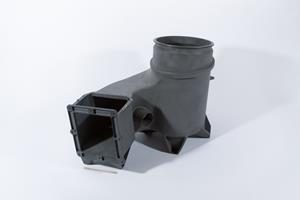Boeing Starliner to Launch with Printed Parts

February 9, 2017
When Boeing’s proposed CST-100 Starliner space taxis take flight, they will be ferrying more than just astronauts and space tourists into the stratosphere. The vehicles will include roughly 600 3D-printed parts.
Boeing has contracted for the parts with Oxford Performance Materials, which received a $10 million investment from advanced materials provider Hexcel this month. The company is delivering its OXFAB production parts for installation on the vehicles.
NASA awarded a $4.2 billion contract to Boeing to build three of the Starliner capsules, and Oxford has already shipped the parts, which are made of PEKK (polyetherketoneketone) material. In 2012, the company demonstrated that the material could withstand the temperature extremes necessary to be used in aerospace and defense applications.
“From our earliest discussions with Boeing, they stressed the need to see significant reductions in weight, cost and lead times in order to consider replacing traditional metallic and composite parts with a new technology for their space program,” said Lawrence Varholak, president of OPM Aerospace & Industrial. “We are proud to be developing and delivering OXFAB technology to the highest standards.”
 An OXFAB structural component that was additively manufactured for the Starliner. Image: Oxford Performance Materials
An OXFAB structural component that was additively manufactured for the Starliner. Image: Oxford Performance MaterialsThe Starliner will be able to deliver a mix of crew and cargo to low-Earth orbit destinations such as the International Space Station.
PEKK parts in the Starliner include brackets for the propulsion system and internal structures for the air revitalization system.
According to the company, the printed parts will reduce both weight and costs for the seven-seat capsules.
“What really makes it valuable to NASA and Boeing is this material is as strong as aluminum at significantly less weight,” Varholak said in an interview with Reuters.
Connecticut-based Oxford also makes aircraft parts, as well as cranial/facial implants and replacement vertebrae for medical applications.
The Starliner is set to begin test flights in 2018.
Source: Reuters
Subscribe to our FREE magazine, FREE email newsletters or both!
About the Author
Brian Albright is the editorial director of Digital Engineering. Contact him at [email protected].
Follow DE





